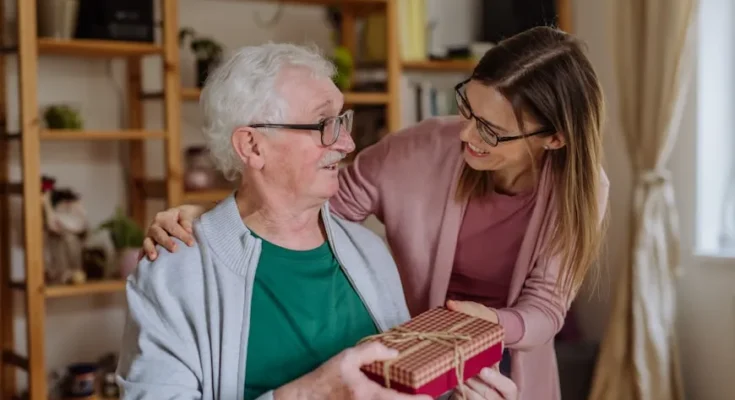Gifts have been a part of human culture for centuries. From ornate treasures offered to ancient kings to a handwritten card tucked into a birthday envelope, gifting is much more than a transaction—it’s a language of emotion. It tells someone, “I see you. I thought of you. You matter.”
In today’s fast-paced, digital-first world, where emojis often replace handwritten notes, the act of giving and receiving a gift holds even more weight. It’s a pause, a moment of connection in the chaos. But what truly makes a gift meaningful? Why do some presents live in our memory forever, while others fade away like yesterday’s wrapping paper?
Let’s unwrap the story of gifting—from its timeless roots to its evolving purpose—and explore how this simple act can carry profound human meaning.
The History Behind the Bow:
-
Ancient Traditions and Symbolism
Gift-giving is as old as civilization itself. In ancient Egypt, gifts were used to honor the gods and cement social ties. In China, red envelopes containing money are still exchanged during Lunar New Year for good luck and prosperity. In Greek and Roman cultures, gifting was often a strategic gesture—offering presents to gain favor or show status.
Even the Three Wise Men brought gold, frankincense, and myrrh to the newborn Jesus, embedding the tradition of Christmas gifting into religious history. From dowries in India to tribal exchanges in Africa, gifts have long carried spiritual, political, and emotional symbolism.
-
A Social Ritual with Deep Roots
Beyond rituals and politics, gifts have always helped humans communicate beyond words. They’ve been used to ask for forgiveness, to celebrate a union, to mourn a loss, or to mark a milestone. A gift can be a bridge where words fall short.
And that hasn’t changed. Even today, a simple bouquet, a handmade craft, or a book chosen with care can say more than a thousand texts ever could.
The Psychology of Giving:
-
The Art of Giving
Psychologists have long studied the emotional effects of gifting—and the findings are remarkable. Giving a gift activates the pleasure centers of the brain, often making the giver feel just as good, if not better, than the recipient. It’s called the “helper’s high,” a genuine rush of endorphins.
When we give a gift, we aren’t just offering an object. We’re sharing a part of ourselves—our time, our thoughts, our creativity. And in doing so, we create connection. We feel seen. We express love without needing to say the word out loud.
-
Gifts as Identity and Intention
What we give and how we give it reveals a lot about us. A gift reflects the giver’s values, understanding of the recipient, and level of thoughtfulness. A spontaneous gift says, “I couldn’t wait.” A personalized one says, “I know you well.” Even the smallest token, when given sincerely, can carry immense emotional weight.
This is why an expensive but impersonal gift can fall flat, while a simple hand-knit scarf or a carefully chosen second-hand book can move someone to tears.
The Gift Economy in the Modern Age:
-
Beyond the Price Tag
In our consumer-driven world, it’s easy to equate value with cost. But meaningful gifting has never been about the price tag. In fact, some of the most memorable gifts cost nothing at all—a letter, a shared memory, a playlist of songs that meant something once.
Minimalism and sustainability have brought back the idea that gifts don’t have to be store-bought to matter. Time, effort, and intention often mean far more than branded boxes or luxury tags.
A walk with your father, a night of stories with your grandmother, a sketch for a friend—these are gifts, too. They’re just unwrapped.
-
The Rise of Experience Gifting
Another trend that’s reshaping the gifting landscape is experience-based presents. People are choosing to give concert tickets, spa days, online courses, or even weekend getaways over physical objects. Why? Because experiences create memories, and memories last longer than objects.
An evening watching the stars or a surprise dance lesson can become a story someone tells for years. And stories, after all, are the most human of gifts.
Occasions vs. Spontaneity:
-
Celebrating the Calendar
Birthdays, weddings, anniversaries, graduations—these moments are naturally gift-friendly. Society expects them, and tradition frames them. But sometimes, the most powerful gifts are the ones given without any occasion at all.
There’s something deeply touching about receiving a gift simply because someone thought of you. No birthday, no holiday—just a Tuesday where you were remembered.
These spontaneous acts remind us that love isn’t confined to dates. It lives in everyday moments.
-
Gifting Through Tough Times
Gifts also play a vital role during grief, illness, or difficult periods. A warm meal dropped off during a hard week, a handwritten note in the mail, a small token left on a doorstep—all serve as emotional lifelines.
In these moments, the gift isn’t meant to celebrate, but to comfort. It becomes an act of empathy, reminding the recipient they’re not alone in their pain.
Gifts in the Digital World:
-
E-Gifts and Virtual Gestures
In the age of technology, gifting has taken new forms. Digital subscriptions, eBooks, NFTs, virtual gift cards—today, you can send someone a present without leaving your couch or even knowing their mailing address.
And while these may lack the tactile thrill of unwrapping a box, they do offer flexibility, accessibility, and relevance—especially for long-distance relationships or international friendships.
What matters most isn’t format—it’s intent.
-
The Comeback of Handmade
Interestingly, even as technology advances, there’s been a resurgence of handmade and artisanal gifts. From DIY crafts and home-baked cookies to customized art and embroidered keepsakes, the personal touch has become a sought-after rarity.
In a world dominated by mass production, a hand-written note or a crafted gift feels like rebellion—and a return to the soulful side of giving.
Children and the Language of Gifts:
-
Learning to Give, Not Just Receive
Children often associate gifts with excitement and celebration. But teaching them the joy of giving is just as important. When kids learn to make or choose gifts thoughtfully, they develop empathy, gratitude, and social intelligence.
It’s not just about birthdays and holidays—it’s about cultivating a lifelong understanding of generosity.
-
The Memories They Carry
Ask any adult about a gift they got as a child, and chances are, they’ll smile. Whether it was a teddy bear from a parent or a handmade card from a sibling, these gifts become touchstones of memory. They remind us of simpler times, of people who once held our hands, of joy that was pure and wide-eyed.
These gifts become emotional heirlooms, even if the objects themselves fade.
The Gift You Can’t Wrap:
At its core, the most valuable gift anyone can give is their presence. Time, attention, active listening, support—these can’t be wrapped in ribbons or boxed up. And yet, they are the most powerful expressions of love and friendship.
In a world filled with distractions, showing up—really showing up—is a gift beyond measure.
Conclusion:
Gifts are not just things—they are stories. They are emotion made visible. Whether grand or small, new or handmade, given on a holiday or a whim, gifts remind us of our connections, our memories, and our shared humanity.
To give is to say, “I was thinking of you.” To receive is to know, “You are loved.”
So the next time you give someone a gift, ask yourself not just what to give—but why. Because in that question lies the magic of the moment—and the soul of the gesture.




